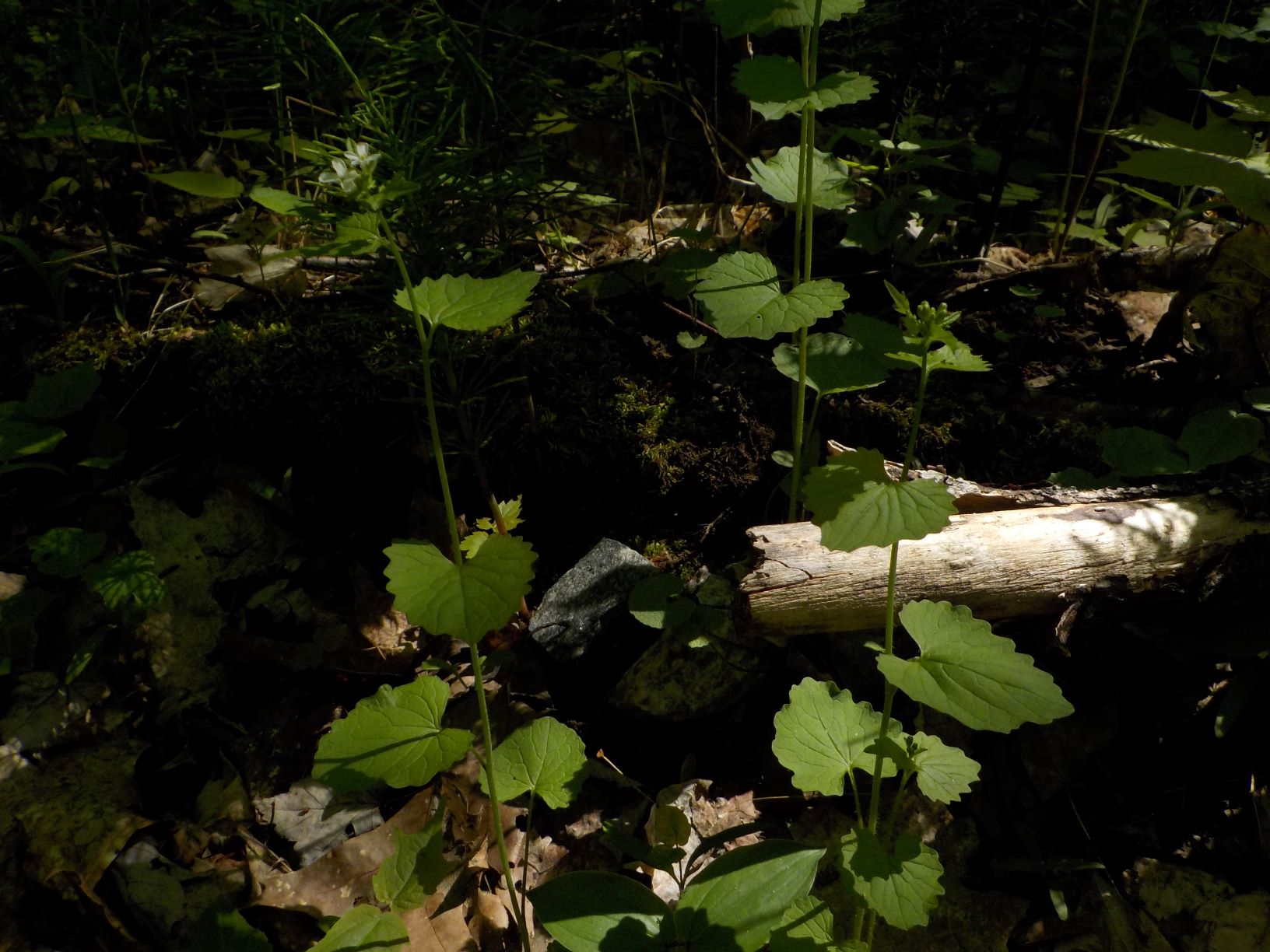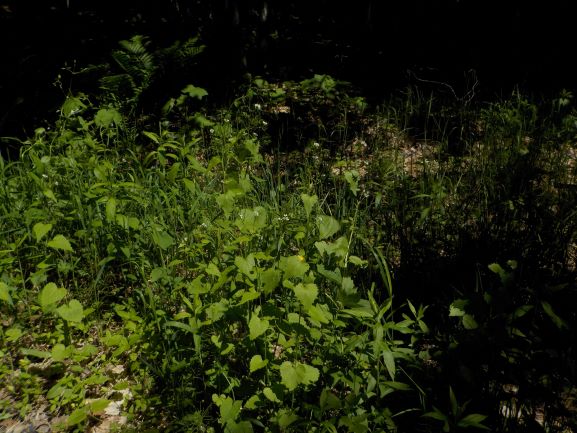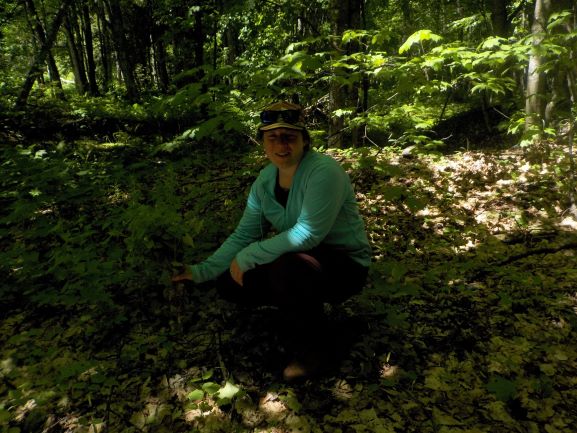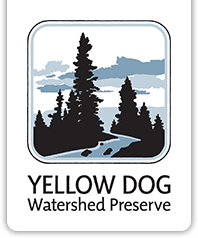
Blog > New Invasive in the Watershed
New Invasive in the Watershed

For many years, crews have been battling invasive plant species within the Yellow Dog Watershed including its headwaters in the McCormick Wilderness Area. Mostly, the fight has been with European swamp thistle, which spreads its tiny seeds on the wind, water, and feet. Recently, however, we discovered a new foe along the river: garlic mustard.

Garlic mustard is an herbaceous biennial that reaches 1-3 feet. The first year plants are small rosettes but the second year plants gain their full height, flower, and seed. Leaves are kidney shaped with scalloped edges. Small, four-petal and white flowers appear in clusters at stem ends, followed by long, skinny seedpods. The seeds are tiny, typical of mustard seeds, and spread easily. Garlic mustard invades upland forests, flood plains, disturbed areas, and more. It seems to prefer a little shade but apparently has been found in full sun as well. It inhibits the growth of native plants because of the chemicals it exudes into the soil, and it can cross or self-pollinate and out outcompetes the native vegetation in seed production; therefore, it can quickly take over an area. Check the Wisconsin DNR website for more information. https://dnr.wi.gov/topic/Invasives/fact/GarlicMustard.html. And if you think you have found a patch, let us know. Even if it is not within our watershed, YDWP will contact Lake to Lake Cooperative Invasive Species Management Area (l2lcisma) and they will confirm and treat the area by pulling the plants and placing them in plastic trash bags for disposal. If not in the UP, l2lcisma will know who to contact in your area.

Garlic mustard was originally introduced from Europe as a food plant, so yes, it is edible for people, but not by wildlife or bugs. I tried the leaves when we were pulling the plants this June and found them bitter, but I have since read that the younger leaves are much better and perhaps they would be tastier cooked. The root apparently tastes like horseradish, but I cannot verify this. I will try them next time.

